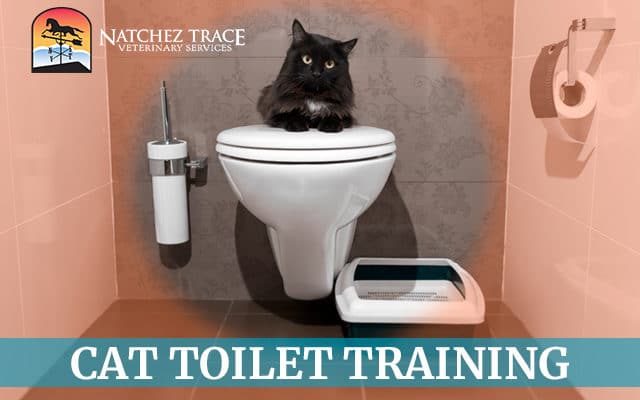Why Cat Toilet Training?
Well, do you ever get tired of cleaning the litterbox? That’s one good reason! And I’m sure you can quickly think of a few more.
Cat toilet training teaches your cat to use the toilet instead of a litterbox. And, is quite easy if done properly.
Just follow the cat toilet training steps listed below and say good-bye to the litterbox!
Cat Toilet Training: Step 1
First, move your cat’s litterbox to the bathroom, placing it right beside the toilet.
Simply leave it there for several days or until you are sure your cat is used to and comfortable with using the litterbox in the location.
Cat Toilet Training: Step 2
Slowly raise the height of the litterbox to match the height of your toilet.
You can do this by placing large books under the litterbox.
Make sure the litterbox is stable and doesn’t wiggle or move when the cat jumps in it!
Also, you may want to secure it with packing tape or duct tape.
Every other day or so, add a few inches to the height of the litterbox.
Whenever you add to the height, also remove some of the litter.
The goal is to make a very gradual change in the height of the litterbox and the amount of litter used.
Doing so will help keep your cat from rejecting the new litterbox arrangement.
Cat Toilet: Training Step 3
After the litterbox has been raised up to the same height as the toilet seat, place the litterbox on the toilet seat so that your cat becomes accustomed to jumping up on the toilet when it needs to use the litterbox.
Again, make sure it is secured so that it does not wiggle or move when the cat jumps in.
Toilet Training: Step 4
After a week or so, cut a little hole in the center of the litterbox, trim down the sides a bit, and reduce the amount of litter in the litter box. Then, every 4 – 5 days, increase the size of the hole so the cat learns to balance itself over the hole.
At the same time, reduce the amount of litter placed in the box.
In the end, of course, there should be NO litter in the box, and the size of the hole should approximate that of the toilet seat.
Important!
Be careful not to rush the training!
If your cat feels uncomfortable at any point, it will choose another location for its toilet.
Interested in natural health care for your cat?
Or, does your cat have litterbox problems due to a health challenge?








